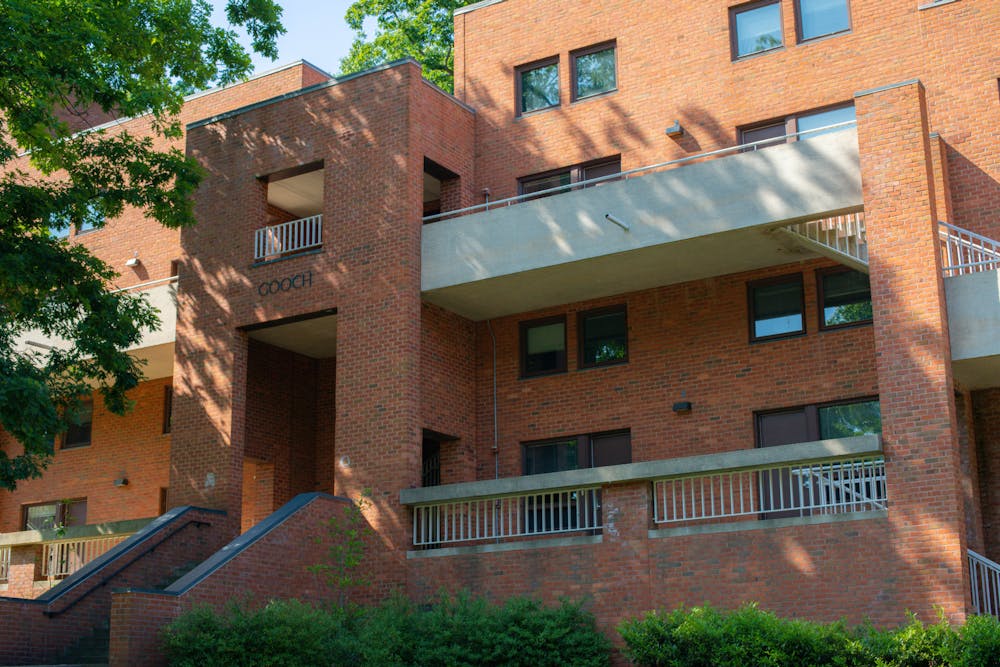Did you know that, according to the Americans with Disabilities Act, public universities are not required to make existing facilities accessible for individuals with disabilities? It is unsurprising, then, but also exceptionally disappointing that the University is concerningly inaccessible — the lay-out of certain dorms and paths to class engender a culture of ableism. Most able-bodied students are not affected by these challenges because these inaccessible structures do not actively impede their daily lives. However, disabled students are deeply and continually affected by this caveat in the ADA. By limiting students with disabilities' access to the entirety of Grounds, the University limits access to the student experience on Grounds. In the absence of comprehensive legislation, the University must take responsibility for the inaccessibility of Grounds and work to promote accessibility for all students despite misguided laws.
As a result of the ADA, the Student Disability Access Center serves students with disabilities, ensuring that they have full access to the University landscape. In keeping with this mission, SDAC defines various mobility impairments that students with disabilities may face — from a twisted ankle to a chronic, invisible illness — which all make Grounds more difficult to navigate. Considering these challenges that students with mobility impairments face, SDAC has worked under ADA guidelines to provide accessibility maps. These illustrate all routes and buildings on Grounds, labeling them as barrier-free for students with disabilities, partially accessible or the ephemeral “other.” Accessibility maps theoretically provide disabled students with a navigational tool with which to construct their routes.
However, in this attempt to help students with disabilities navigate Grounds, the University has utterly failed to adequately deal with the lack of barrier-free structures. In fact, these accessibility maps perpetuate falsehoods about the actual accessibility of major structures and paths on Grounds. Many of the most popular areas on Grounds are patently inaccessible and inconveniently laid out on the accessibility maps provided by the University.
And the examples speak for themselves. For a student to get from Brandon Avenue to the Lawn, it would require a labyrinthine route through various elevators, ramps and buildings that are not clearly labeled or detailed on the map itself. If a student with disabilities had a fifteen-minute space between their classes, it would be difficult for that student to make it on time even from New Cabell Hall to Monroe Hall — two buildings that are relatively close together. Moreover, while the Lawn has been renovated with wheelchair ramps, this measure has not expanded its reach to surrounding areas like East Range and the path near Brooks Hall. Having such a systemically inaccessible physical landscape on Grounds inhibits various students with mobility issues, making their daily commute difficult and, at times, impossible.
In addition to the inaccessible routes on Grounds, only one third of first-year dormitories are considered to be “barrier free,” and two-thirds are “partially accessible.” “Partially accessible” is an exceptionally ambiguous term that often obscures a fundamentally inaccessible reality. For example, the Gooch-Dillard suite-style dorms are considered “partially accessible,” but a closer examination reveals that they are not even remotely accessible. These dorms sit on top of extremely steep hills with no elevators, no way of getting to the bus stop without stairs and second-floor suite bathrooms that are inaccessible without using stairs. In this way, it is borderline impossible to accommodate students that have mobility impairments in Gooch-Dillard. Conclusively, it seems that the “partially accessible” label overshadows massive inaccessibility for residents with disabilities.
Gooch-Dillard, while exceptional in its inaccessibility, fits into a larger norm of ableist dorm structures. Other first-year dorms including Courtenay, Dunglison and Fitzhugh share similar characteristics to Gooch-Dillard — steep hills to reach the dorms and no elevators to get to one’s suite. Additionally, according to accessibility maps, the upper-class housing complex Lambeth boasts a single elevator. Hereford Residential College, while wheelchair-accessible to a certain point, requires stairs for most floors. New and old dorms alike struggle to provide accessible entrances and wheelchair-accessible elevator access with split-level floor designs. By not constructing uniformly accessible dormitories, the University forces students with disabilities who live on-Grounds to be constantly restricted in their day-to-day routine in a way that able-bodied students simply are not.
As promised in President Ryan’s 2030 plan, the University aims to become an institution of greater educational and economic accessibility for new students. It is ironic, then, that the University has so thoroughly and consistently overlooked the physical accessibility needs of students with disabilities. If accessibility is a focus of the 2030 agenda, then the administration must be doing more than the barest minimum of installing a couple of ramps on the Lawn. Instead, they must renovate existing structures with an eye for complete — not just partial — accessibility. Even if renovation is not required in the ADA, it is necessary for our University. Taking a firm step towards physical accessibility will hold our University to a higher standard and allow the institution to more completely realize its mission of accessibility, providing a truly top-tier, safe and accessible environment for all students.
Scarlett Sullivan is a senior associate opinion editor who writes about politics for The Cavalier Daily. She can be reached at opinion@cavalierdaily.com.
The opinions expressed in this column are not necessarily those of The Cavalier Daily. Columns represent the views of the authors alone.







